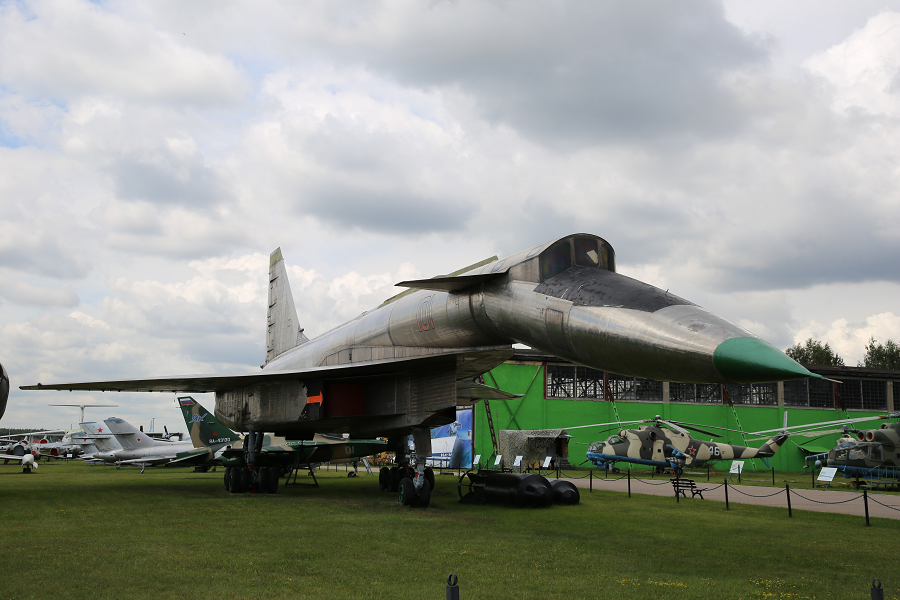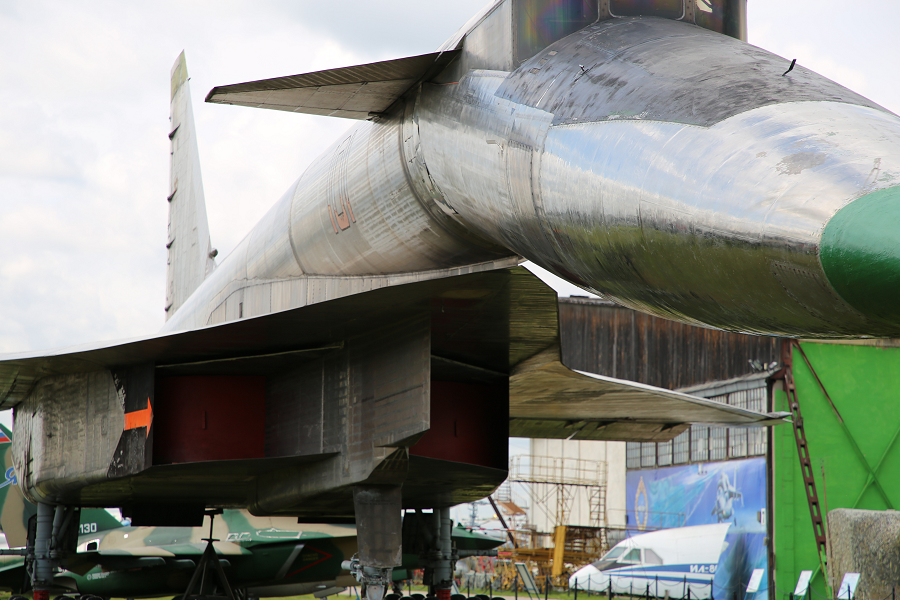The Sukhoi T-4, or “Aircraft 100”, or “Project 100”, or “Sotka” was a Soviet high-speed reconnaissance, anti-ship and strategic bomber aircraft that did not proceed beyond the prototype stage. It is sometimes called the Su-100.
In 1963, the Soviet government held a request for proposal among the aircraft design bureaus, with the aim of developing an aircraft analogous to the North American XB-70 Valkyrie. The Sukhoi design, with its high cruise speed of 4,200 km/h (2,600 mph) was favored over the designs submitted by Yakovlev and Tupolev and after a preliminary design review in June 1964, the building of a prototype was authorized.
Development of the T-4 required massive research efforts to develop the technologies necessary, including the manufacturing technologies to machine and weld the materials necessary to withstand sustained Mach 3 flight. Nearly 600 patents or inventions are attributed to the program.
The first flying prototype was finally completed in the autumn of 1971. Work continued on an additional three airframes (one for static testing) through 1975. In 1974, the Ministry of Aviation Industry ordered work suspended on the T-4 project, which was officially scrapped on 19 December 1975.
The aircraft’s droop nose lowered to provide visibility during takeoff and landing. A periscope was used for forward viewing when the nose was retracted, and could be employed at speeds of up to 600 km/h (370 mph). Drogue parachutes were used in addition to conventional wheel brakes.
Operational history
The first T-4, designated “101”, first flew on 22 August 1972. The test pilot was Vladimir Ilyushin, son of famed aircraft designer Sergei Ilyushin, and the navigator was Nikolai Alfyorov. Testing continued to 19 January 1974. The T-4 flew only ten times for a total of 10 hours and 20 minutes.
The aircraft with unique titanium and steel structure. The first aircraft in the world to fly quadruplex redundant 3-axe fly-by-wire system. Total 10 flights made. Flight range – 7500 km, max. speed 3200 km/h, ceiling – 24 km, crew -2. Engine: RD 36-41. Chief designer N. Chernykov
One T-4 survives. Aircraft “101” is on display at the Central Air Force Museum in Monino near Moscow.












